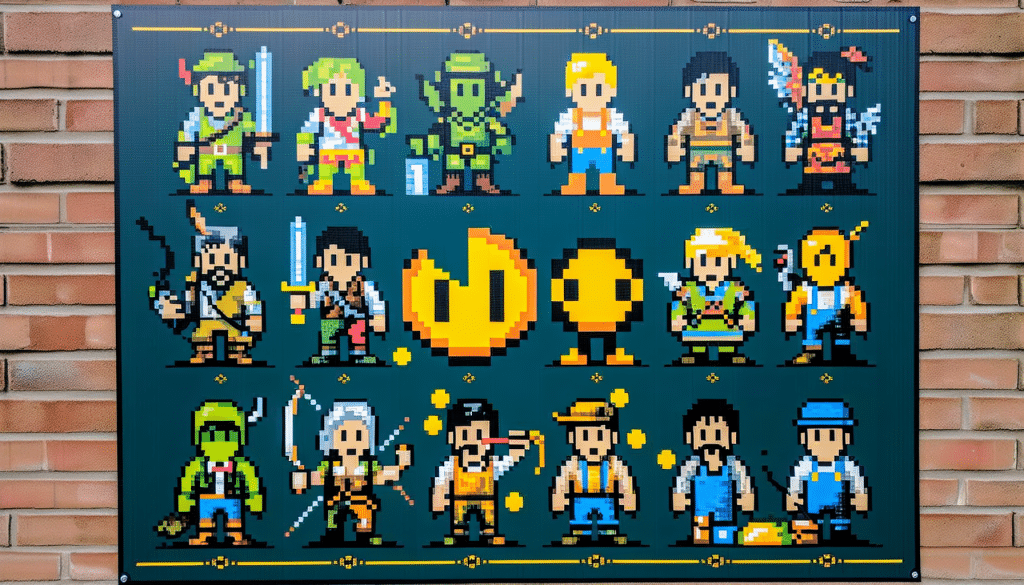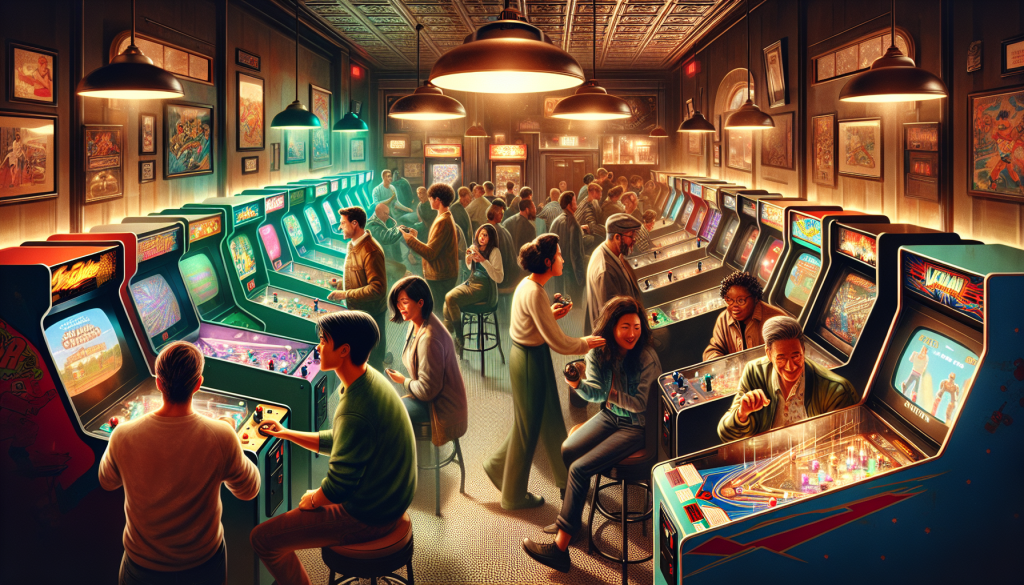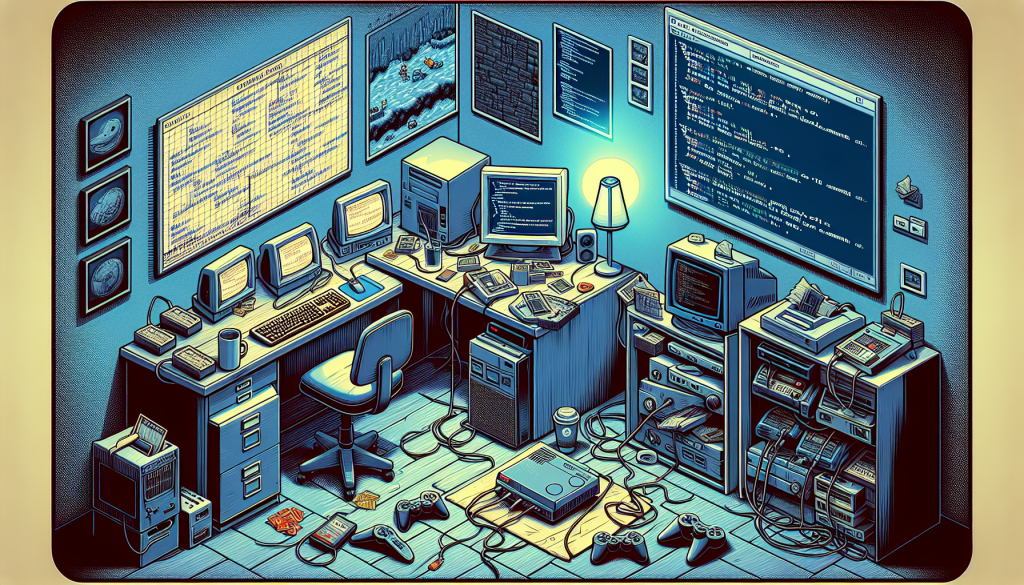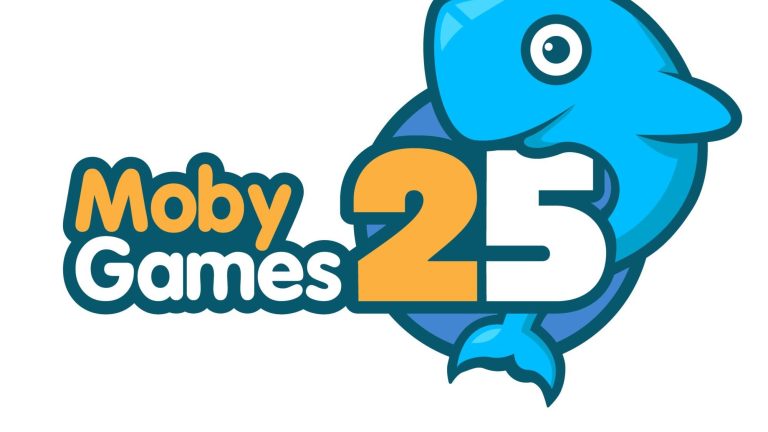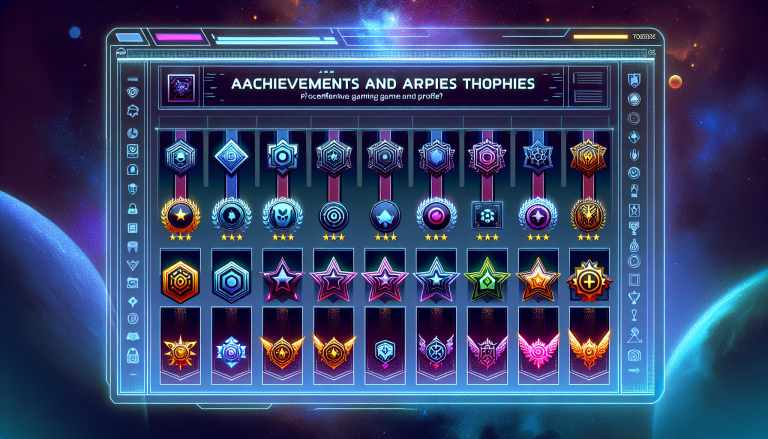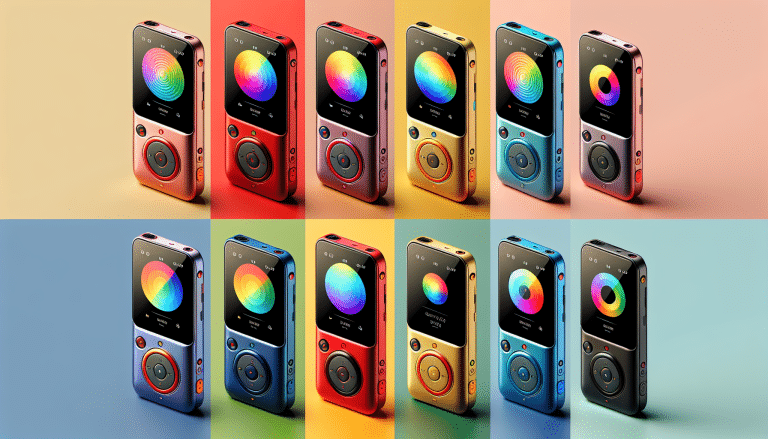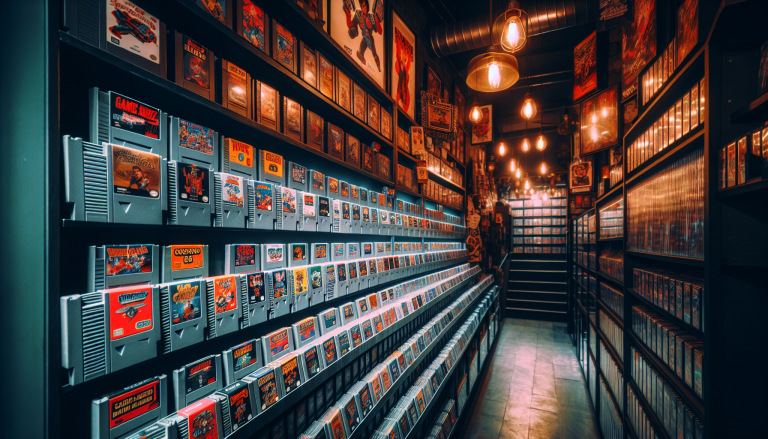The Revival of Retro Gaming in the Digital World
Who said old-fashioned can’t be trendy? In the world of gaming, what’s old is new again and it’s gaining more traction than ever. The revival of retro gaming in the digital world is a phenomenon that’s caught everyone by surprise, from seasoned gamers to industry experts.
For those unfamiliar, when we talk about retro gaming, we’re referring to a love for and playing of video games from the ’70s, ’80s, and ’90s — think Pac-Man, Super Mario Bros, and Sonic the Hedgehog. Even though the gaming industry is advancing at a lightning-fast pace with cutting-edge graphics and immersive virtual reality experiences being the norm, these timeless classics are enjoying a resurgence among gamers of all ages.
Why the sudden interest in retro gaming?
There could be a multitude of reasons behind this sudden shift, but it primarily seems to be driven by a blend of nostalgia and the search for authenticity. You see, these classic games were simple yet challenging, with quirky 8-bit graphics and catchy soundtracks that tap into a nostalgic vein. They remind gamers of simpler times, sparking memories of childhood and the excitement of playing a new game for the first time.
- Nostalgia: For many gamers, playing these retro games is akin to flipping through an old photo album, taking them on a journey down memory lane. It’s a warm and fuzzy feeling they can’t get from modern games.
- Authenticity: The beauty of these games lies in their simplicity and straightforwardness. No complicated storylines, no extravagant graphics. Just plain old fun that focuses on the core gaming experience.
The Digital Twist
Now, you might be wondering, how does all this fit into the digital world? Well, the digitization of retro games has played a significant role in their resurgence. Platforms like Nintendo’s Virtual Console and PlayStation Network have made numerous classic titles available for download on modern systems. Similarly, mobile app stores are teeming with reimagined versions of retro games, allowing gamers to relive their favorite classics on the go.
- Accessibility: Digitization has made retro games more accessible than ever. With just a few clicks, gamers can download and start playing their favorite childhood games on their modern devices.
- Innovation: Digital platforms have also enabled developers to add new features and improvements to these games, giving them a fresh twist while retaining their original charm.
So, while the digital world is advancing with new gaming technology, there’s a charming corner of the gaming universe that’s looking to the past and embracing the retro with open arms. If you haven’t yet, it’s time you gave retro gaming a try. After all, everything old is new again!
The Influence of Digital Nostalgia on Contemporary Gaming Culture
Whether it’s the thrill of rescuing Princess Peach once more in Super Mario Bros or the exhilarating feeling of landing a perfect finishing move in Street Fighter, the appeal of retro gaming in the digital age is undeniable. But how exactly is digital nostalgia influencing contemporary gaming culture?
The Power of Nostalgia
Nostalgia has a powerful impact on our emotions. It’s no surprise then that it plays a significant role in the gaming world. We’re drawn to the familiar – they remind us of pleasant memories, simpler times, and treasured experiences. As a result, we tend to gravitate towards the games we loved in our childhood.
The Nostalgia-Driven Success of Retro Games
Retro games stand as a testament to the influence of nostalgia. Many contemporary gamers find joy in the simplicity and charm of these old-school classics. Developers have recognized this trend and are bringing back beloved games with enhanced graphics and improved gameplay mechanics, effectively marrying nostalgia with modern technology.
- Pokémon Go: A prime example is Pokémon Go. The game, which uses augmented reality to bring the Pokémon universe into our world, skyrocketed in popularity upon its release in 2016. Pokémon Go’s success can be attributed to its clever use of nostalgia, emulating the classic Pokémon games while integrating modern technology.
- Classic Mini Consoles: Similarly, the release of consoles like the NES and SNES Classic Editions, small replicas of Nintendo’s original home consoles, preloaded with a selection of classic games, saw massive success. These consoles provided contemporary gamers with a taste of the past, rekindling fond gaming memories.
The Impact on Gaming Mechanics and Storytelling
But the influence of digital nostalgia extends beyond the simple re-release of old games. It’s reshaping the way games are designed and stories are told. Many modern games are adopting retro-inspired aesthetics and gameplay mechanics, invoking the feel of classic games while offering a fresh and innovative experience. Games like Shovel Knight and Celeste are perfect examples of this trend.
In conclusion, the influence of digital nostalgia on contemporary gaming culture is profound. It’s not just about reliving the past – it’s about reinterpreting it, breathing new life into old classics, and creating fresh experiences with a touch of nostalgia. As we look to the future of gaming, it’s safe to say that the influence of our gaming past will continue to shape the games of tomorrow.
Consumer Engagement and Market Trends Fueled by Nostalgia
In the digital world, nostalgia is a powerful tool. It triggers a sense of longing for the past, and when it comes to gaming, it can drive consumer engagement and shape market trends. Let’s dive into how nostalgia is influencing the modern gaming industry.
Increasing Popularity of Retro Games
Recent market trends have shown a surge in demand for retro games. These games, often pixelated and with chip-tune soundtracks, are reminiscent of the 80s and 90s gaming culture. Consumers are yearning for the days of arcade classics like Pac-Man and Super Mario, and developers are responding.
Analysts suggest that the demand for retro games is fuelled by nostalgia. It’s all about rekindling that sense of joy and excitement that gamers felt when they held their first game console or beat their high-score on an arcade game.
Driving Engagement through Nostalgic Marketing
Nostalgia has also proven to be a successful marketing strategy. Companies are creating engaging promotional content featuring iconic characters from retro games. These campaigns aim to spark the collective memory of consumers, driving engagement and sales.
- Take, for example, Nintendo’s Classic Mini series. These consoles, which are miniature versions of their iconic NES and SNES systems, were marketed with a strong nostalgic appeal. They were an instant hit, with gamers of all ages keen to relive their childhood.
- Similarly, Sega has embraced the retro revival, releasing a mini version of their hugely successful Genesis console. Touted as a “trip down memory lane”, the Sega Genesis Mini was met with high demand and positive reviews.
Forging Connections with Retro-Inspired Games
Interestingly, nostalgia isn’t just driving the re-release of classic games. Developers are creating new games with retro-inspired aesthetics and gameplay mechanics. These games, often labeled as “neo-retro”, forge an interesting connection with consumers. They offer the familiar charm of retro games while introducing modern gaming elements.
- Consider the success of indie game “Shovel Knight”. It features 8-bit graphics and side-scrolling action, reminiscent of games from the NES era. However, it also includes modern gameplay elements, like a deep storyline and character development.
- Another example is “Stardew Valley”, a farming simulation game inspired by the classic “Harvest Moon”. It’s a modernized version with added gameplay mechanics, but the pixelated graphics and charming characters stir a sense of nostalgia.
In conclusion, nostalgia is proving to be a potent force in the gaming industry. It’s driving consumer engagement, shaping market trends, and encouraging the creation of both retro and retro-inspired games. As we move forward, it’s fascinating to see how this nostalgia-driven gaming trend will evolve.
The Interplay between Modern Gaming Innovations and Retro Gaming Appeal
When you think about gaming today, you probably imagine immersive 3D graphics, realistic sound effects and AI-driven gameplay. However, there’s a seemingly counterintuitive trend taking the gaming world by storm – the resurgence of retro games. These 8-bit wonderlands, once thought to be relics of a bygone era, are now co-existing with the high-tech games of the modern era. So, let’s dive into the fascinating interplay between these two seemingly disparate worlds of gaming.
Modern Innovations Resurrecting Classic Games
In an age where virtual reality and blockchain are transforming the gaming landscape, it’s surprising to see the impact they’re having on retro games. For example, virtual reality (VR) is breathing new life into old-school games, creating immersive experiences that encapsulate the charm of the originals while bringing them into the 21st century.
Take Pac-Man VR, for instance. This iconic game’s VR version allows players to experience the classic Pac-Man maze from a first-person perspective, making the gameplay more immersive and exciting than ever before.
Similarly, blockchain technology is also playing a pivotal role in the revival of retro gaming. With blockchain, gamers can now own and trade virtual assets from their favorite old-school games. This not only adds a new dimension to the retro gaming experience but also taps into the gamer’s nostalgia, making these classic games appealing to a whole new generation of players.
Retro Elements in Modern Games
On the flip side, we also see modern games incorporating retro elements, illustrating the interplay between the old and the new. This is particularly evident in the Pixel Art style that many indie games have adopted. Games like Shovel Knight and Stardew Valley use this art style to evoke nostalgia, while still offering the sophisticated narratives and gameplay mechanics associated with modern gaming.
- Remastered versions of classic games are another trend in the gaming industry. Developers are reimagining beloved franchises with updated graphics and enhanced features, bridging the gap between the past and the present. Examples include Final Fantasy VII Remake and The Legend of Zelda: Link’s Awakening.
While the technology and gaming experiences are continuously evolving, the appeal of retro games seems to be timeless. By integrating modern innovations with classic gaming elements, the industry is creating a unique gaming culture that honors the past while embracing the future. Undeniably, this beautiful interplay is giving gamers the best of both worlds and will continue to shape the future of gaming.

